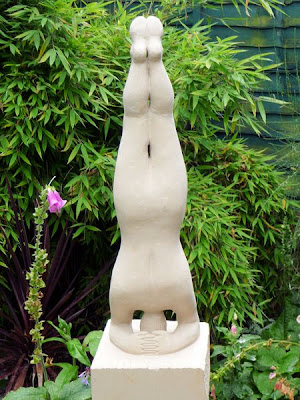
Caen Hill Flight
Q – Could you introduce yourself briefly to the readers?
My name is Robin Woodford, I spent my early years in a farm cottage on the edge of Savernake Forest near Marlborough, which gave me my love of the countryside which is reflected in the rural images of my paintings When I married I moved to Swindon and I have lived here ever since.
Q-How did you become interested in art?
I have always had an interest in art and enjoyed drawing and painting all my life.

Canal House Pewsey
Q - What inspires you most as an artist?
What inspires me most as an artist is the satisfaction I get from reproducing my own interpretation of a subject and I, like most artists also enjoy the appreciation of my work by my friends and customers.
Q - What is your favourite medium or media? Why?
I enjoy water colour for its atmosphere and acrylic for its vibrant colours. Acrylics are very versatile and can be used in a similar style to either water colour or oil paints.

Devizes Whasrf
Q - Could you tell us some more about your work?
Although I like to paint traditional landscapes I also enjoy the freedom of abstract artwork and often combine them into semi-abstract paintings.
I sometimes find that my work follows a theme and I paint several different scenes of the same subject . I have for example painted a series of paintings at different locations of the Kennett and Avon canal. I seem to have a liking of painting waterscapes and water features in lots of my paintings.

Kennett and Avon Canal at Kintbury
Q - How would you define your style?
My style is fairly traditional watercolour and even my acrylic paintings are painted in a similar style and could be mistaken for watercolours.
Q - What are your influences; artists from the past or present who inspire you?
I am very much influenced by my two favourite artist’s Constable and Turner.

Liddington Hill
Q - How do you choose the subjects of your works?
I have a large selection of subject matter that I have collected over the years.
If I have a commission to paint I may be able to find inspiration from this. Mostly however a commission is of a particular place so I visit the site, do drawings and take photographs to be used for reference and then I complete the painting in my studio.
Q- How do you prepare yourself for an exhibition or a show like the Open Studios?
I collect together all the paintings that I can muster from my studio and choose those that will show my work to the best advantage. These will contain mostly local landscapes which are always popular.

Kennett and Avon Canal Pewsey
Q- Did you take part in the Swindon Open Studios in the past?
Yes, I have but this is the first time as part of a group. (i.e. the Swindon Artists Forum.)
Q - Are there territories (media, subjects, etc.) you want to explore in the coming years?
I am always looking for new materials and methods so if anything new comes along I am willing to give it a try.
Q - As an artist, what would be your dream?
I would like to be successful with an instantly recognised name.
Q - Could you share one thing that you have learnt in your own art practice that would be useful to other artists?
If you are doing a painting that is going wrong carry on until you have completed the painting. Very often it will work out better than you thought it would. If not you will still gain valuable information and may avoid the same problem in the future.
















